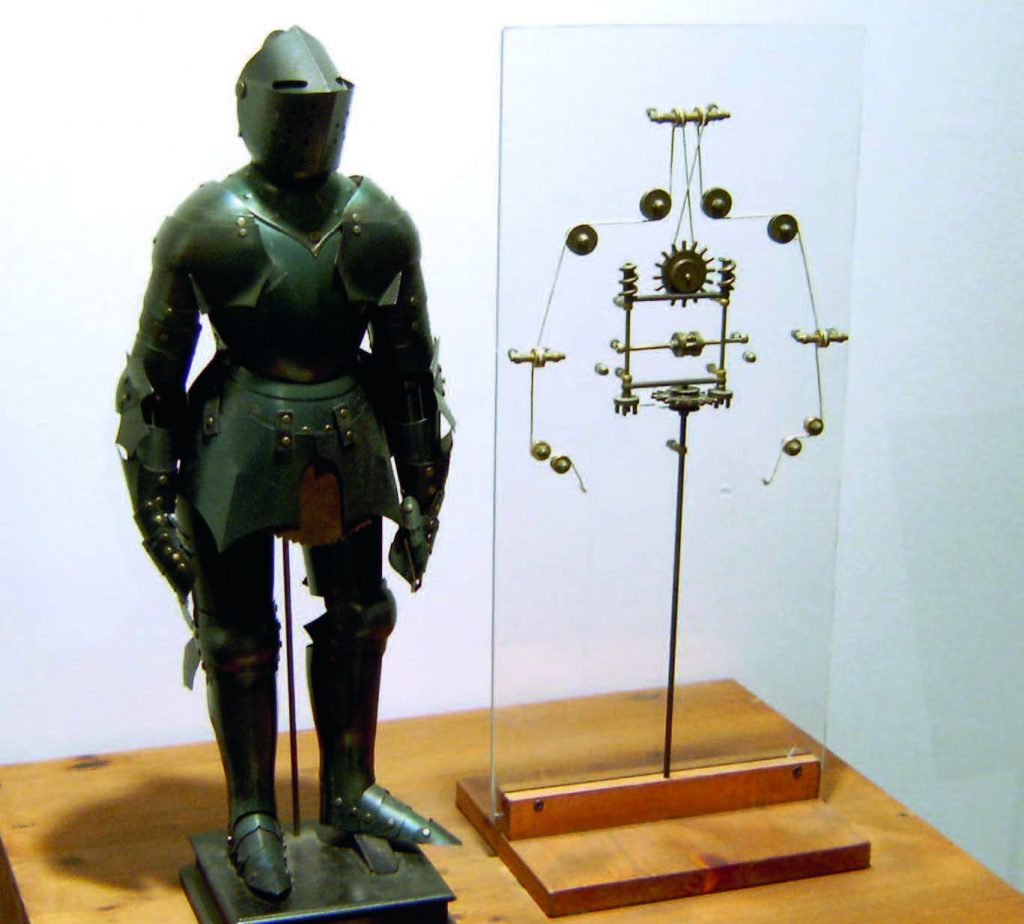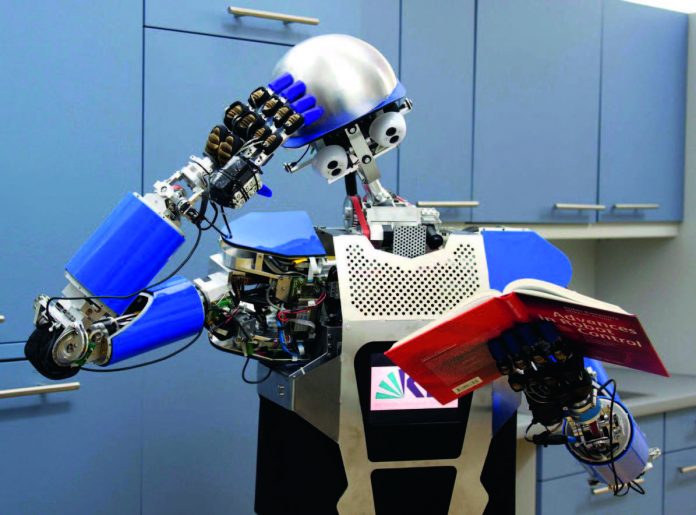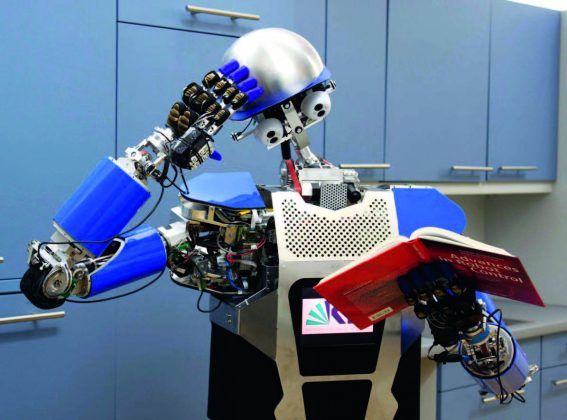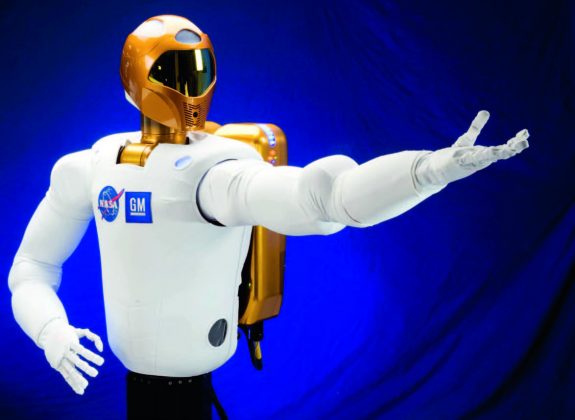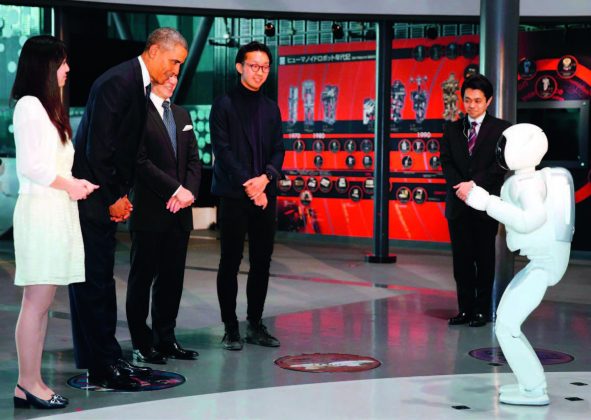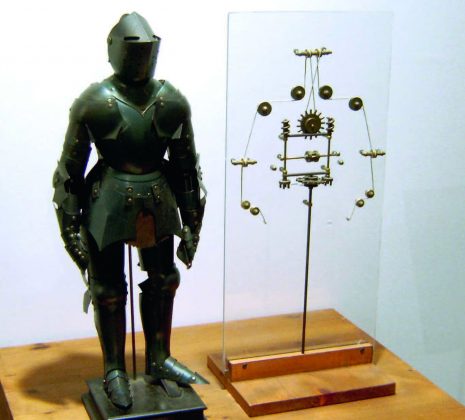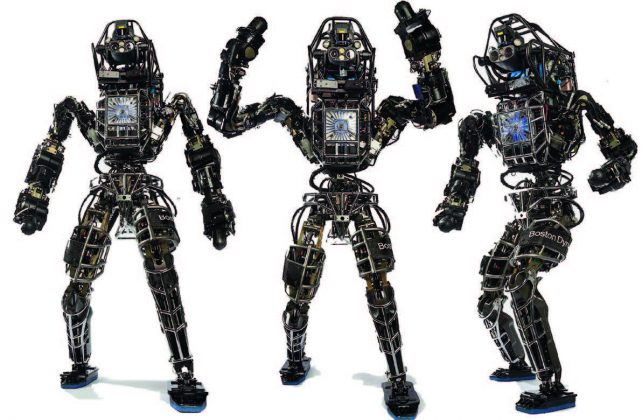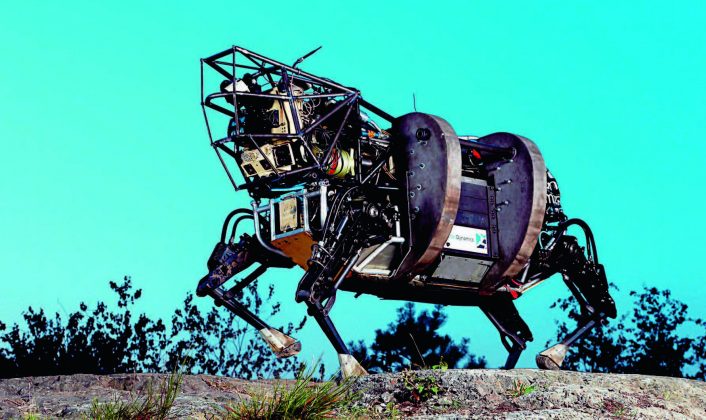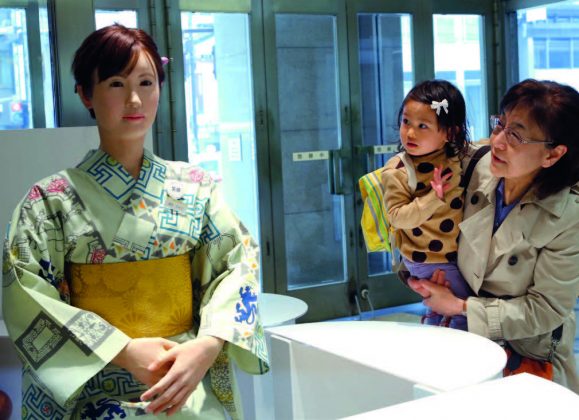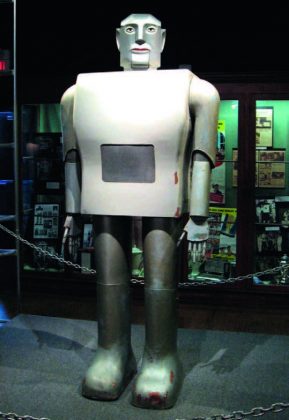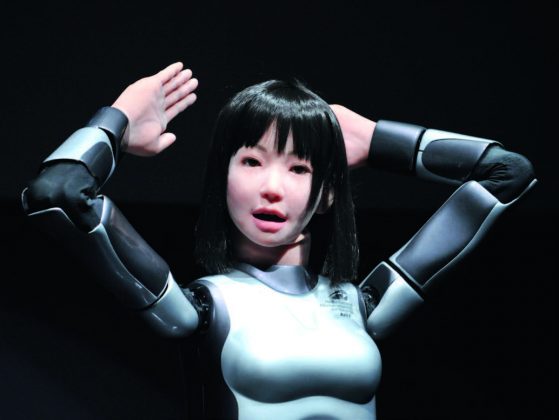By M. Ferhat YÜKSEL
As mankind continues to explore and understand itself, the world and even space more and more each day, technology continues to develop faster and without hindrances compared to civilizations, humanity and cultures. This development is more focused on areas such as the arms industry, space technology, computers, energy and robotics. We will brainstorm on the contributions of the robotic sector, used from medicine to production, space to the entertainment sector and weapons, and its contribution to mankind in both a material and spiritual sense. The word robot comes from the Czech word robota which means ‘drudgery, forced labor’. The first robot in history was a mechanic bird made by Plato’s friend Archytas of Tarentum in fifth century BC that worked with compressed air or steam. Robotics has reached the current level it is at through the research of Leonardo da Vinci in the 15th century, Whitewestinghouse in the 20th century, and many companies today such as Boston Dynamics, Toyota, Sony and Honda. At its current point, we can call robotics, which includes many branches of engineering, a cocktail of engineering.
WHY ROBOTS?
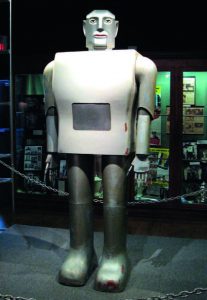
Today there is a need for a technology that can take people to places they can’t go to because of the adverse living conditions on earth and in space, and that can carry out activities that forces the human physique or requires serious physical power. This is why explorations on Mars is done by robots like Rover Sojourner, comet research is done by Philae, and explorations at the bottom of the ocean is done by Nereus. Especially recently, robots that serve mankind, make life easier, and can carry out work with finesse, power, detail and accuracy in production that people cannot provide are being produced. Of course the rising labor costs and a lack of skilled workers is a fact that forces manufacturers to invest in the robotics industry.
A MARKET THAT OFFERS POSSIBILITIES
The robotics market offers growing opportunities to tion and production is rising but unemployment is rising at the same rate. Actually, even though it isn’t as much as the employment that disappears because of this sector, it is still a reality that it creates 170,000-190,000 new jobs in the global market every year. But the problem here is that we are talking about jobs that are for qualified, experienced and technically trained people, not the lower or middle-class jobs that are disappearing.
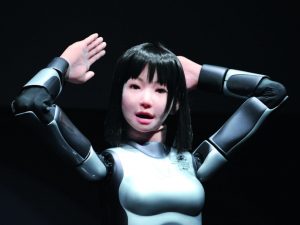 In the United States, more than 5 million people are unemployed in sectors related to production alone because of the automation system. Examples are endless, but it is also a reality that robotics will have different affects on different economies. The nature of business and labor that is undergoing a revolution due to education and technology, will seriously change in the economies that makes infrastructure investments into education, technology and related fields.
In the United States, more than 5 million people are unemployed in sectors related to production alone because of the automation system. Examples are endless, but it is also a reality that robotics will have different affects on different economies. The nature of business and labor that is undergoing a revolution due to education and technology, will seriously change in the economies that makes infrastructure investments into education, technology and related fields.
WE ARE BECOMING ALIENATED
The affect of new technologies such as robotics on unemployment is undebatable, but another important problem is its affect on social structure. In a world where everything is made by robots, people are becoming alienated from themselves and turn into a structure that is more introverted. In addition, with the education system of our day, we are faced with the problem of whether we are being trained with the necessary qualifications and according to the professions of tomorrow’s job market.
ARTIFICIAL INTELLIGENCE
Developments in the area of deep learning (giving machines the function to think, make decisions and analyze like humans) are a breakthrough in the development of artificial intelligence.
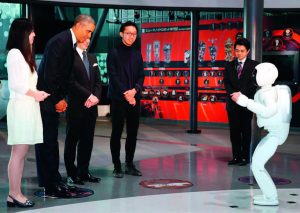
People see, perceive, take action and finally, in order to reach the goal, the brain analyzes the information it perceives (thinking) and commands it to perform the required action. Carnegie Mellon University Computer Science Professor Manuela Veloso and his staff are trying to produce robots that can think, decide and move like humans using artificial sensors and algorithms that activate mechanisms. According to experts, robots that can see, hear and act independently, even though not exactly like humans, will be released by 2025. These robots will not think creatively like humans but will exhibit behaviors like humans. But because robots cannot carry out these actions as flawlessly as humans, they will play a more complementary role. In fact, humanoid forms are preferred so that robots can adapt to environment and society quicker and easier.
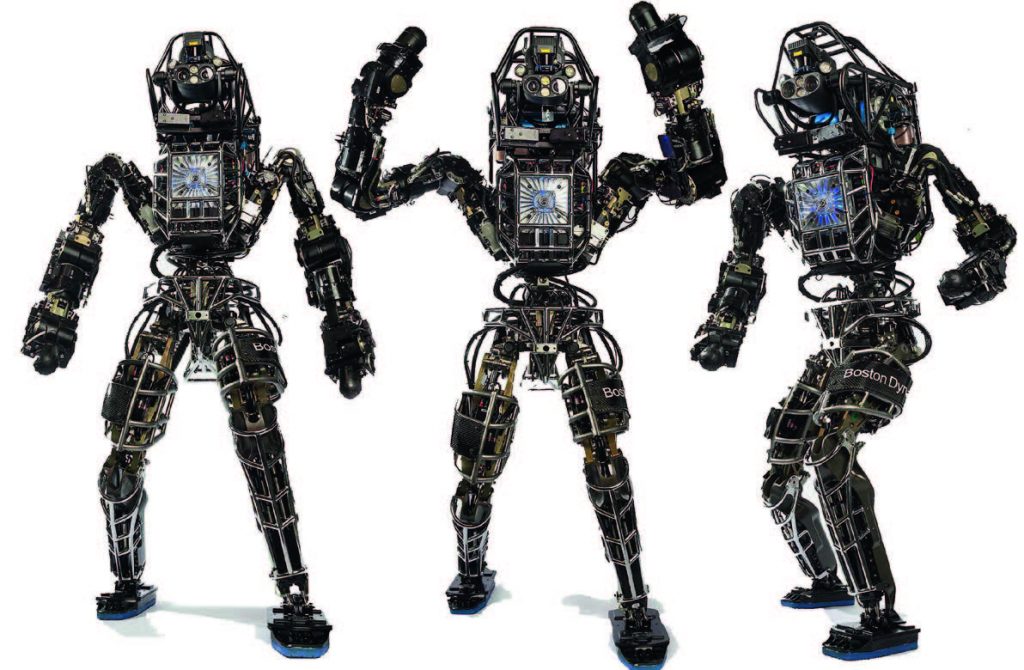
BOSTON DYNAMICS ARE THE EXPERTS
Boston Dynamics was launched in 1992 to develop human simulation software and today has become an engineering company that develops robots and the consumer, industrial and office sectors. This fast growing multi-billion dollar market dominated the logistical and industrial sectors until recently, and is in software with exceptional mobility, agility, skill and speed. The company not only produces human-like robots, but also animal robots attracted the attention of Google, who loves the robotic sector, and was incorporated into the Google Group in 2013. Currently one of the best of the world in the robotics sector, Dynamics shares ideas and gives advice on high-tech robot development to institutions such as DARPA, the U.S. Army and Sony.
WILL SAVE LIVES
If there is something more interesting than humanoid robots, it is animal-like robots. Boston Dynamics’ robots that can move easily like a dog in rough terrain and can run, jump obstacles and carry objects. In the videos shared by Dynamics, that have the goal of producing robots that can seamlessly find their way and move in the real world, you can see robots with incredible balance continue to walk or run despite being kicked. In the near future, we can send the Atlas robot of Dynamics to a disaster zone to find and save people lost in the rubble.
There are no projects on the agenda of arming robots and using them to harm people. In fact, there are debates within the United Nations about introducing strict international rules and regulations on armed ‘killer robots’.
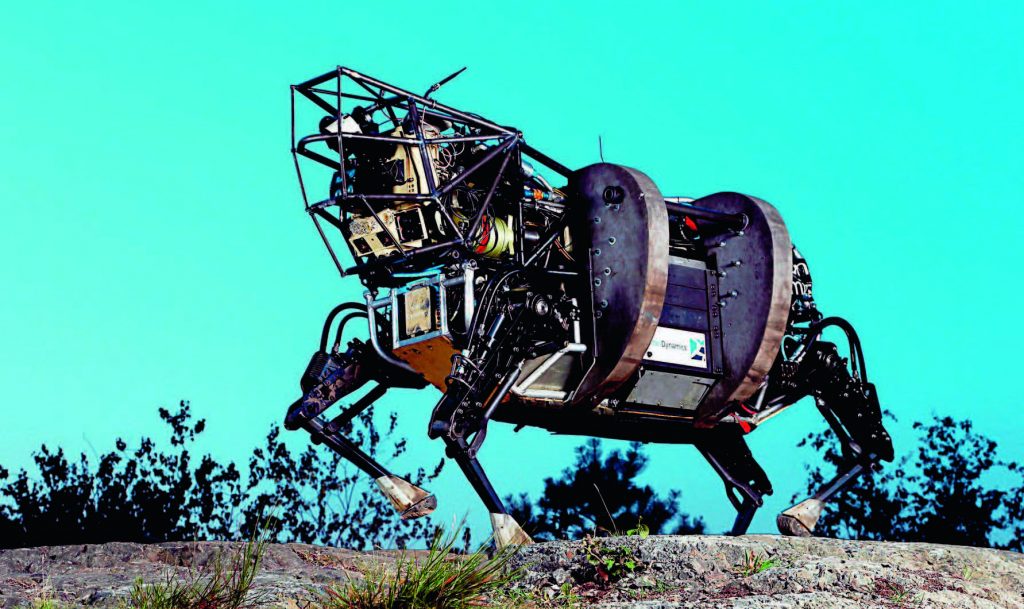
centimeters high, can reach speeds of 6 kilometers an hour and carry 180 kilograms.
MACHINES RISING…
Some see robots as a dangerous technology that will end humanity by overcoming humans with their intelligence or power in the near future. Elon Musk, known for his technology investments, has donated $7 million to the Future of Life Institute (FLI) to protect humanity against artificial intelligence. The aim of FLI is to make sure that the development of artificial intelligence goes down a path that is beneficial for human the process of transitioning to the consumer and office sectors. The market volume of only the robots used in consumer and office uses is expected to exceed $1.5 billion by 2019 while the industrial robotics market is expected to exceed $40.8 billion. More than one million industrial robots are in use today, nearly half in Japan. This market is dominated by countries such as the United States, Japan, Germany, China and South Korea and currently the largest national market is in the United States. This appetizing market, in addition to the contributions it brings, also comes with some serious deficiencies.
JOB KILLER?
However much production is swift, continuous, cost effective and accurate, the prices and market viability is effected positively as much. The time in which a person can work efficiently is very limited. On the other hand, a programmed robot can work for hours, even days. Ultimately, manufacturers love low-cost production and consumers love low-priced products. But does the economic earnings obtained here reflected to us? Unemployment, increasing economic pressure on the lower ity. Musk said at a 2014 conference at MIT University that the uncontrolled development of artificial intelligence is more dangerous than nuclear weapons, and that it is like ‘calling the demons’. Likewise, founder of Microsoft Bill Gates believes that this technology will cause problems in the near future and said; “In a few years artificial intelligence can become strong enough to cause problems. This is why I don’t understand how some people are not worried.” Finally, I would like to share famous physicist Stephen Hawking’s apocalyptic view: “Artificial intelligence can redesign itself at an increasing rate. This feature can cause it to replace people, who are limited by slow biological evolution and cannot compete with artificial intelligence.”
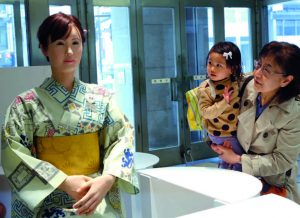
Actually, all of the new technologies we currently use bring the world to your doorstep, but in the near future, with the assistance of robots and virtual reality tools, you can reach every corner of the world. Meaning you can help your friend in another country move into a new home as you sit safely in your home, using a remote controlled robot. To this example, you can add search and rescue efforts in disaster zones, battling in war zones, and even caring for your older family members from afar. If these developments that we mentioned take place, robots will not only change our lives, but expand our lives and spread it to wider areas. class and a rapidly shrinking middle class… The popularity. Musk said at a 2014 conference at MIT University that the uncontrolled development of artificial intelligence is more dangerous than nuclear weapons, and that it is like ‘calling the demons’. Likewise, founder of Microsoft Bill Gates believes that this technology will cause problems in the near future and said; “In a few years artificial intelligence can become strong enough to cause problems. This is why I don’t understand how some people are not worried.” Finally, I would like to share famous physicist Stephen Hawking’s apocalyptic view: “Artificial intelligence can redesign itself at an increasing rate. This feature can cause it to replace people, who are limited by slow biological evolution and cannot compete with artificial intelligence.” Actually, all of the new technologies we currently use bring the world to your doorstep, but in the near future, with the assistance of robots and virtual reality tools, you can reach every corner of the world. Meaning you can help your friend in another country move into a new home as you sit safely in your home, using a remote controlled robot. To this example, you can add search and rescue efforts in disaster zones, battling in war zones, and even caring for your older family members from afar. If these developments that we mentioned take place, robots will not only change our lives but expand our lives and spread it to wider areas.
